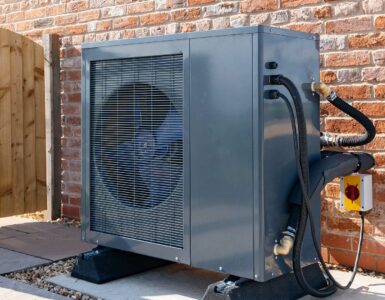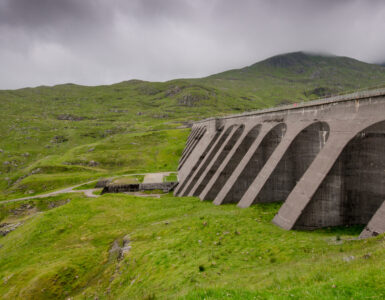No matter what time of day it is where you are, somewhere in the world the Sun is shining. So how do we harness this energy source that’s always on (somewhere!)
Well, we can use both the light and heat energy of the Sun as energy sources. On this page, we focus on the heat or thermal energy from the Sun.
Watch the animated video below to learn how the Sun’s thermal energy can be used to generate electricity or heat homes.
ELECTRICITY
How do we harness the Sun’s heat energy?
Concentrated solar thermal power stations offer great potential in hot, semi-arid regions of the world such as northern Africa. This is an efficient way to generate electricity from freely available heat energy.
How does it work?
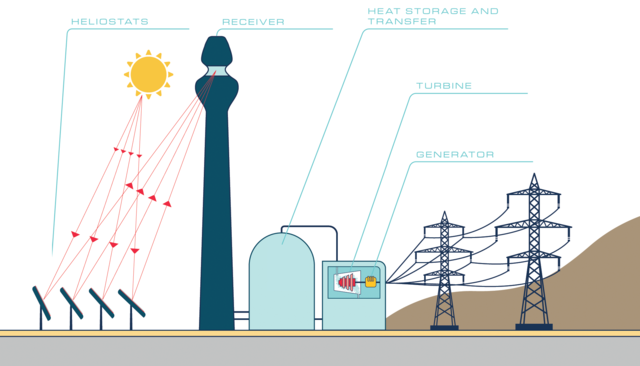
Click to view full size image in new tab.
Heliostats are large mirrors that reflect sunlight on to the receiver at the top of the tower.
In the receiver the energy from the sunlight is absorbed by a fluid, such as molten salts, warming the fluid to 500 degrees Celsius.
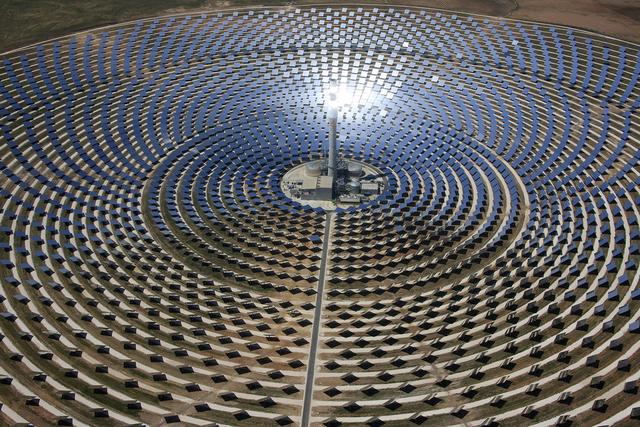
The hot fluid is pumped down the tower where it can be stored for up to 15 hours.
When required the heat energy from the fluid is transferred to liquid water, turning it into high-pressure steam.
The high-pressure steam spins the blades of a turbine. The generator converts the spinning motion of the turbine into electricity.
The power station is particularly useful because it can directly generate electricity or it can store the energy from the Sun as heat which can be used later to produce electricity.
It is estimated that this style of power station could satisfy much of the energy needs of the Middle East and Northern Africa.
HEATING
With clever design we can take full advantage of the Sun’s free heat to help satisfy our heating needs.
How does it work?
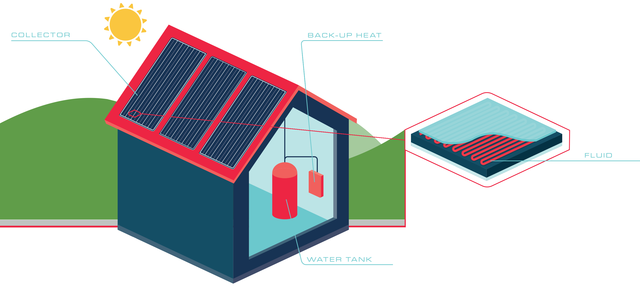
Click to view full size image in new tab.
The collector is a large plate with a black coating that readily absorbs the Sun’s energy.
The heat is transferred to a fluid inside tubing attached to the plate. The fluid is usually a mix of water and anti-freeze so it can survive cold winter nights.
The Sun-heated fluid travels through a coil of pipes inside the water tank, transferring the heat to the water for use in the home.
If the water is not hot enough from the solar heat, an alternative back-up system can top-up the heat.
The Future of Solar Heating
Many solar thermal systems do not fully replace a traditional heating system but simply reduce the energy needed from traditional sources.
Heating is one of the main uses of energy today and using the Sun’s freely available energy can dramatically reduce how much fuel or electricity is used for heating.

In some parts of the world, the Sun’s heat energy is being used to cook food for free. Large, curved dishes like the one at the very top of this article, focus the heat from the Sun’s rays directly onto a cooking pot or frying surface. The only cost for this zero-fuel technique is to buy and maintain the system.
Clever building design will is also important to how we can benefit from the sun’s heat energy in the future.
In the summer months, when the Sun is high in the sky, the shades block the unwanted heat and reduce the energy used for air conditioning. Then in the winter, when the Sun’s angle is lower in the sky, the Sun’s rays make it through the shades to warm the building and reduce the energy used for heating.





